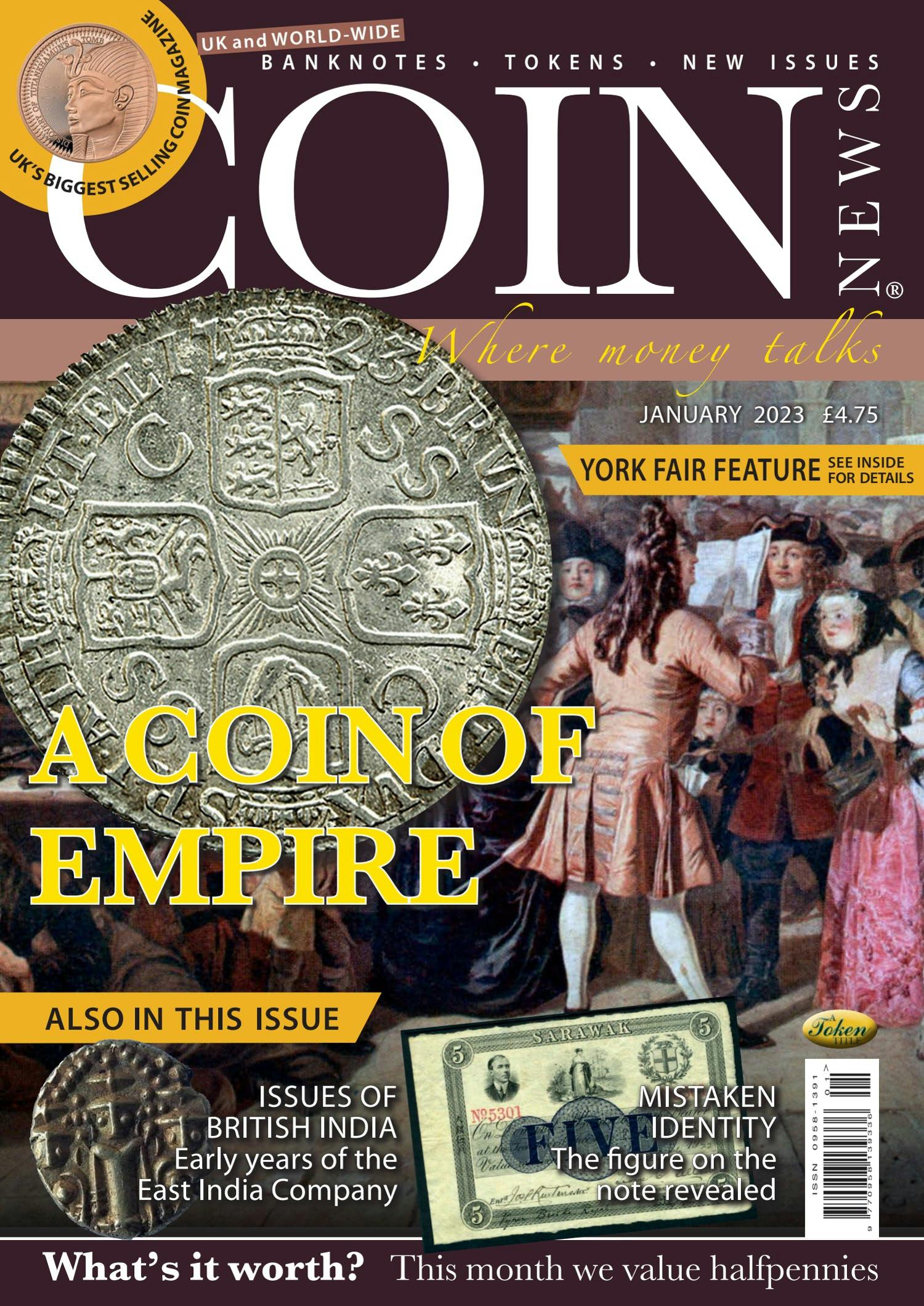Coin of Empire
Volume 60, Number 1, January 2023
Just for fun THESE days, it’s quite common to find media outlets talking about modern coins, usually in relation to how much somebody has listed a coin for online, with headlines such as “Rare 50p selling for £5,000— have you got one in your pocket?”. However, it is less usual to find ancient coins making the news, unless perhaps a hoard is dug up. It’s certainly not often that coins which have been around for hundreds of years make headlines, but that changed recently when a study at the Hunterian Museum in Glasgow announced that a Roman gold coin discovered in the 18th century and hitherto thought a fake was, in fact, real and because it was real, then so the Emperor depicted on its obverse, Sponsian, was real too. Sponsian has only ever been known about because of a handful of coins discovered in the late 18th century. They have, up until now, been regarded as fakes and, as there is no mention of an Emperor Sponsian anywhere else, it was assumed he was made up, too. The Hunterian now disagrees and has published a study showing the coins were, in fact, in use in the relevant period (3rd century AD) which would mean that Sponsian himself, who they say was most likely a general elevated to Emperor status by his troops at a time when the Empire was beset from all sides by the forces that would finally destroy it, was real as well. Other august institutions, most notable the Ashmolean and the British Museum, have been quick to voice their scepticism, if not outright incredulity, at the Hunterian’s study, pointing out that the metal composition, the style of design (in particular the eye and the inscription) the language used (apparently the Latin is the wrong case), the weight and the production method (the Sponsian coins are all cast, not struck) all point to the coins being products of more modern times and thus fakes. But here’s the thing—why would you bother? Why would anybody fake a coin that’s not actually a coin? Anything that is out of the ordinary, unrecognised, is going to come under added scrutiny so why spend time and money (don’t forget the coin in question was gold) faking something when it’s likely to be outed as a forgery early on? Today, you might argue that somebody might “unearth” a brand-new coin for fame (or notoriety) but back in the 1700s news travelled slower than it does today. There’d be no 15 minutes of fame for the discoverer of a Sponsian gold piece; no accolades, no lecture tours or magazine articles, and because the coin would undoubtedly come under scrutiny as something new it would likely attract more negative attention than positive anyway. This being the case, is the coin “real” or not? Well, that depends on your definition of real: it’s gold, certainly, and has an obverse and a reverse. It looks like a coin and the uninitiated would probably say it is a coin but as we know that doesn’t necessarily make it so. Of course, one cannot put modern definitions on ancient coins, especially coins minted in periods of turmoil and warfare when “issuing authorities” might change on an almost daily basis and where what was important was the value of the metal in the coin and not necessarily whose head appeared on it, but nevertheless we all know what we mean by a “coin”, and generally what we mean is “was it minted to be used as money, or if it wasn’t, if it was a “commemorative”, could it have been used as money if someone had wanted to?” That the Sponsian coin could have been used as money is not in doubt. It’s gold after all, and most people in the Roman Empire wouldn’t have known, or cared, who the chap on the obverse was—all they cared about was whether it was real gold or not, so yes, it could have been used as a “medium of exchange” in that regard but only, and here’s the important part, if it had actually been around in the third century. If it had been manufactured in the 18th then no, no one was going to take it in exchange for goods. And that’s the nub of the Hunterian’s argument: they say it’s old enough to be Roman, others say not. It’s unlikely we’ll ever know for sure, but I would like to posit a theory of my own. Maybe the coin isn’t Roman, but that doesn’t make it a forgery either. We have, today, numerous fantasy pieces issued for the collectors’ market, things that look like coins but are no more than keepsakes, souvenirs, mementos. Is it perhaps possible that all of this kerfuffle has been caused by something somebody knocked up one idle Saturday for a bit of fun? No malicious intent, no desire to deceive, just something to pass the time, little knowing that centuries later three of the biggest museums in the country would be arguing about its legitimacy. It won’t be the first time this has happened, I’m sure, and I doubt it will be the last...
Order Back Issue
You can order this item as a back issue, simply click the button below to add it to your shopping basket.

